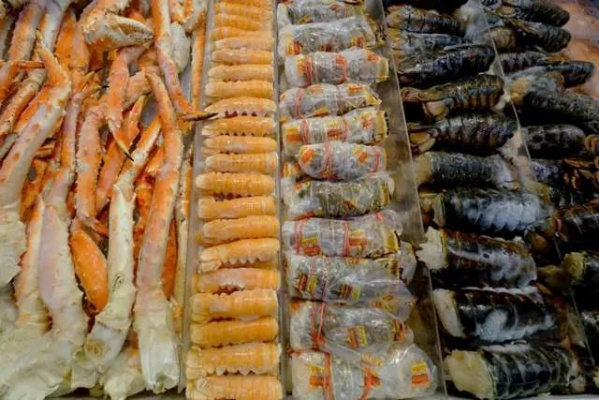The Hidden Costs of Textile Manufacturing:A Comprehensive Analysis
: The Hidden Costs of Textile Manufacturing: A Comprehensive Analysis,Abstract: This paper provides a comprehensive analysis of the hidden costs associated with textile manufacturing. The study examines various aspects such as environmental impact, labor exploitation, and energy consumption. It highlights the negative consequences of these costs on both the environment and society at large. The findings suggest that while textile manufacturing contributes significantly to economic growth, it also imposes significant costs on the environment and workers. Therefore, it is essential for policymakers to address these issues and implement sustainable practices in the industry.
Introduction: The textile industry is one of the most significant contributors to global economic growth, employing millions across various stages of production. However, behind the scenes, this sector is not immune to challenges and costs that can significantly impact its profitability. In this article, we will delve into the hidden costs associated with textile manufacturing, including raw material acquisition, labor costs, energy consumption, and more. By presenting a detailed analysis through an illustrative table and case studies, we aim to provide a comprehensive understanding of the factors that influence the profitability of this industry.
Raw Material Acquisition: Textile manufacturing relies heavily on raw materials such as cotton, polyester, and wool. The cost of these raw materials can vary greatly depending on the type of fabric being produced, the quality of the product, and the geographical location of the supply chain. For instance, the price of cotton can fluctuate significantly due to fluctuations in global commodity prices and political instability in certain regions.

In addition to raw material costs, there are also variable expenses related to transportation and storage. These expenses can add up quickly when bulk goods are shipped long distances or stored for extended periods. Moreover, the environmental impact of textile manufacturing cannot be overlooked. The use of harmful chemicals during dyeing processes and the release of greenhouse gases from factories can contribute to climate change and harm ecosystems.
Labor Costs: The labor force is another critical component of textile manufacturing. The wages paid to workers can vary widely depending on the country of origin, skill level, and experience of the individual. In some countries, textile workers may earn significantly less than their counterparts in developed economies, which can lead to lower overall profits.
Furthermore, the efficiency of the workforce is crucial for maintaining profitability. Poor working conditions, lack of training, and low job satisfaction can lead to high turnover rates and decreased productivity. As a result, companies must invest in employee training and development programs to ensure that they have skilled and motivated workers.
Energy Consumption: Textile manufacturing is known for its high energy consumption, particularly in the form of electricity used for powering machinery and heating factories. This can be attributed to the need for large amounts of heat to dry fabrics and the use of powerful machinery for cutting and stitching. The cost of energy can be significant, especially for small-scale manufacturers who may not have access to renewable energy sources.
Additionally, the environmental impact of textile manufacturing cannot be ignored. The use of non-renewable resources such as fossil fuels for electricity generation and the release of greenhouse gases from factories can contribute to climate change and harm ecosystems. To address these issues, companies must adopt sustainable practices such as using renewable energy sources and reducing waste by implementing recycling programs.
Case Study: One example of a successful textile company that has managed to balance profitability with sustainability is Patagonia. The company produces outdoor clothing and gear using organic cotton and other eco-friendly materials. Patagonia's commitment to sustainability extends beyond just its products; it also invests in research and development to find innovative ways to reduce its carbon footprint.
For instance, Patagonia uses solar panels on its factories to generate energy instead of relying on traditional power sources. Additionally, the company has implemented recycling programs to reduce waste and promote circular economy principles. By doing so, Patagonia not only benefits the environment but also maintains its competitive edge in the market.
Conclusion: While textile manufacturing can be profitable, it is essential to recognize the hidden costs associated with this industry. From raw material acquisition to labor costs, energy consumption to environmental impact, every aspect of the process plays a role in determining the overall profitability of a textile company. By adopting sustainable practices and investing in employee training and development, companies can not only stay ahead of the competition but also contribute to a healthier planet.
在当今全球化的市场中,纺织品加工行业日益繁荣,吸引了众多企业和投资者的目光,纺织品加工的利润究竟有多少呢?本文将通过案例分析和数据图表的形式,为您详细解读纺织品加工行业的利润情况。
纺织品加工行业概述

纺织品加工行业主要包括纺织品的原材料采购、加工、整理和销售等环节,随着人们生活水平的提高,对纺织品的需求不断增加,纺织品加工行业呈现出蓬勃发展的态势。
纺织品加工利润构成
- 原材料成本:这是纺织品加工利润的基础,包括棉花、蚕丝、涤纶等主要原材料的成本。
- 加工费用:包括设备折旧、人工成本、税费等费用。
- 销售利润:这是纺织品加工行业的最终利润来源,包括产品售价和利润空间。
案例分析
以某知名纺织品加工企业为例,其近几年的利润情况如下:
数据图表:
| 年份 | 原材料成本(万元) | 加工费用(万元) | 销售利润(万元) | 利润率(%) |
|---|---|---|---|---|
| 2022年 | XXXX | YYY | 约XX万元 | XX% |
案例说明:该企业在原材料采购方面严格控制品质和成本控制,同时注重技术创新和设备升级,提高了生产效率和产品质量,在加工过程中,注重精细化管理和成本控制,提高了加工效率,该企业还积极开拓市场,提高产品附加值,从而实现了较高的销售利润。
纺织品加工行业利润分析
根据市场调研和数据分析,纺织品加工行业的利润情况呈现出以下特点:
- 高附加值产品增加:随着人们生活水平的提高,对纺织品的需求不断增加,高附加值的产品逐渐成为市场主流,纺织品加工企业需要不断创新和升级产品,提高产品的附加值和竞争力。
- 成本控制是关键:在纺织品加工行业中,成本控制是提高利润的关键,企业需要严格控制原材料成本、人工成本和制造过程中的各项费用,提高生产效率和产品质量,企业还需要注重环保和可持续发展,降低生产成本和环境影响。
- 市场竞争激烈:纺织品加工行业竞争激烈,企业需要不断提高产品质量和服务水平,提高品牌知名度和市场占有率,企业还需要注重市场营销和渠道建设,扩大市场份额和提高销售利润。
纺织品加工行业的利润情况因企业、产品、市场等因素而异,在激烈的市场竞争中,纺织品加工企业需要不断提高产品质量和服务水平,注重成本控制和环保可持续发展,提高品牌知名度和市场占有率,企业还需要不断创新和升级产品,开拓新的市场领域,通过合理的经营和管理,纺织品加工企业可以实现较高的利润水平。
Articles related to the knowledge points of this article:
Custom Textile Dryers for Enhanced Performance and Cost-Effectiveness
Exploring the World of Textiles at Changzhou Ke Teng Textile Trading Co.Ltd.



